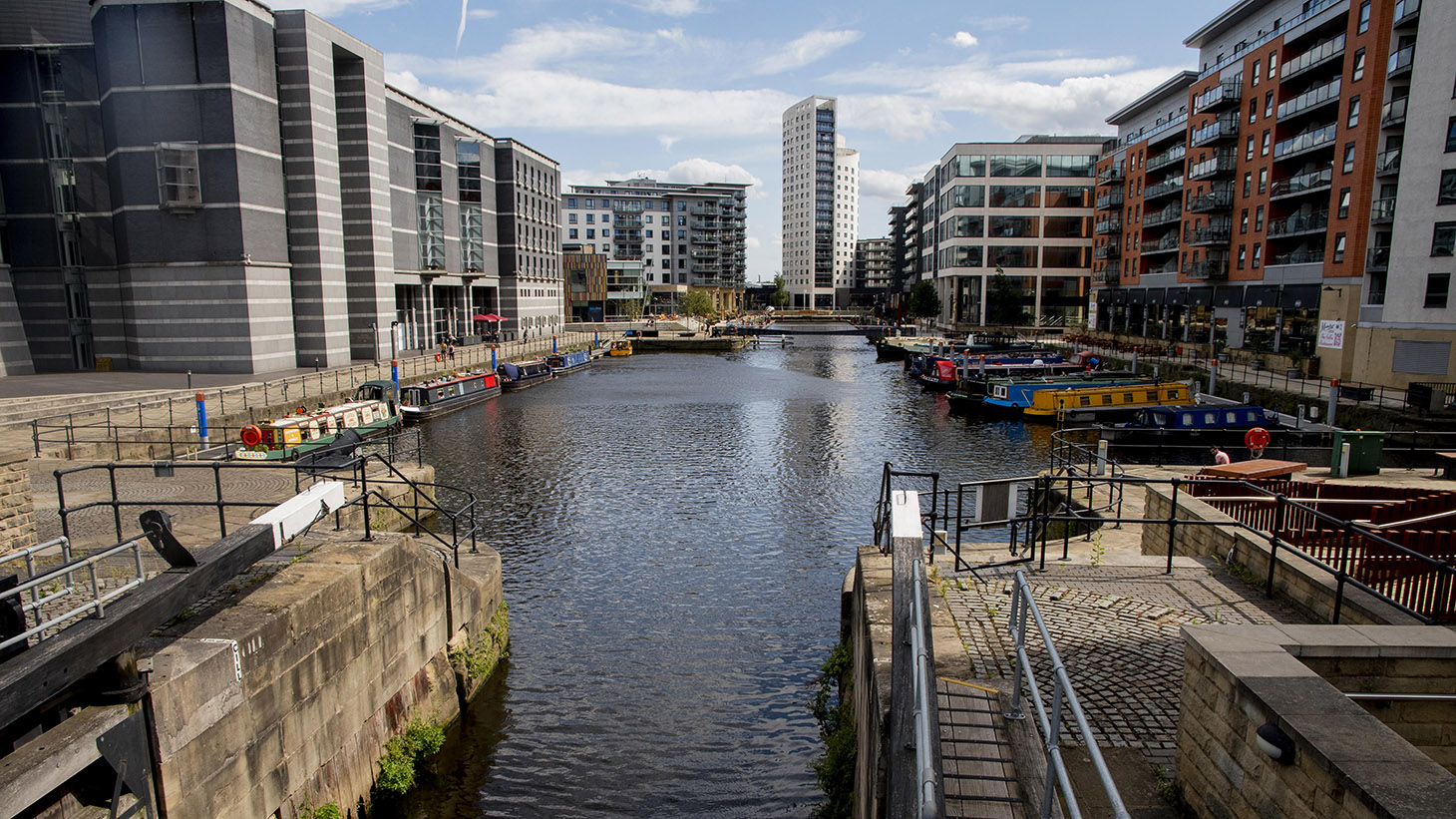
Assessment Summary
The Leeds South Bank is an excellent example of regeneration driven by the business community and local activists coming together, then engaging with and supporting the City Council to shape the development of a former industrial and residential area, in one of the great Northern industrial cities. It showcases the way that pioneering entrepreneurship can lead the way in exploiting apparently economically peripheral areas and to generate new markets.
When fully developed the area will effectively double the size of Leeds city centre and will reincorporate the River Aire as part of people’s daily lives. The area has good road and public transport links to the rest of Leeds, which, of course is also well served by road and rail. If HS2 goes ahead, the city will have a major national north/south high-speed rail hub based in the South Bank; although many local people and businesses would probably give priority to a high-speed trans-Pennine route linking the city to Manchester.
Former manufacturing uses and housing have been cleared and the assessors were very impressed by the variety and quality of the new enterprises and developments that are replacing them. Despite some blight from the currently unresolved HS2 route affecting part of the area, its regeneration is forging ahead.
In a rapidly developing area the projects are spread over a wide area but the Leeds Sustainable Development Group (LSDG) has promoted a strategic approach. The City Council actively promoted the South Bank after 2013. Recently the developer of the 8.5ha former Tetley brewery site collaboratively developed a masterplan that will in time be a great example of urban development and placemaking.
LSDG is an exemplar of local professionals, including architects, planners, geographers, writers and historians with a passion and enthusiasm for the future of their city, becoming the catalyst for the regeneration of an emerging neighbourhood.
The area is relatively close to the centre of Leeds and once fully developed will be physically, socially and culturally integrated with the city as a whole. Culture and education are at the core of the changes that are taking place. The Ruth Gorse Academy, under the leadership of Sir John Townsley, was established in advance of, and in anticipation of, new family housing illustrating the strength of faith and commitment to the area. It has a national reputation for delivering outstanding education for children living nearby in one of the poorest urban areas in the country on the borders of the South Bank, many of which are ambitious refugees and asylum seekers. Its educational standards and diversity have made it the city centre secondary school of choice. When more housing developments take place locally there is already a strong secondary education infrastructure in place to serve the new population and a new primary school is included in current housing plans.
The former office buildings of Tetley’s brewery have been retained and sensitively refurbished as an innovative contemporary art gallery, ‘The Tetley’, with strong artistic and community objectives. The Duke Street Studios is another inspirational space committed to nurturing new talent and providing start-up and permanent office and studio space for creative industries in a very exciting and sensitive conversion of a former industrial building. In the prevailing culture of the area, the studios are the result of the inspiring hard work and commitment of individuals and, in this case, a sympathetic and supportive landlord.
Innovation is also evident in the creation of a cutting edge IT centre by a Leeds based digital entrepreneur in a former chapel.The unassuming exterior conceals an internationally and nationally important communications hub.
The international developer Vastint has ambitious plans for a sustainable development of an 8.5 hectare site within the South Bank that will not only provide a mixed residential and commercial development but a new city public park designed for recreation and entertainment and adding to the connection with the city as a whole.
Currently, there is little housing in South Bank, and the new family houses in the Climate Innovation District are the first to be built in the city centre since the war. They are one of the award winning developments delivered by Citu, which has sustainability at the core of all its work. The high quality, cleverly designed, energy efficient timber framed houses are prefabricated in a factory in the South Bank and constructed on the other side of the River Aire. Other examples of the work of this excellent developer were seen as part of last year’s winning Great Neighbourhood at Kelham Island, Sheffield. The completed development will also incorporate the new primary school, feeding into the Ruth Gorse Academy.
The South Bank is a very important example of a neighbourhood in transition. It is fair to say that not all the components of a neighbourhood are in place yet but there is a confidence and positivity about the place that will ensure that they will be. The Leeds Sustainability Development Group has provided a lot of the stimulus, vision and effort to join together the key elements making up and forming the South Bank. Despite many changes in the economy and policy environment in recent years something very coherent and successful seems to be emerging.
Lead Assessor:
Tim Challans AoU
Deputy Lead Assessor:
Jef Smith AoU, Ann Wallis AoU
